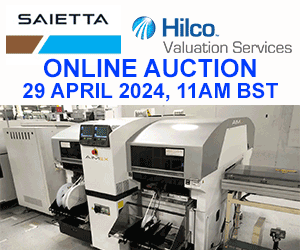SEMI Shares Joint Industry Statement on RoHS Directive with European Commission
SEMI is part of a joint advocacy action voicing the views of the electronics manufacturing and digital industries on RoHS to the European Commission. In late 2018, SEMI shared a statement reflecting the common view of key industry associations with the European Commission and two consultants – Oeko-Institut and Fraunhofer IZM – contributing to a study that supports the review of the list of restricted substances and assesses a new exemption request under RoHS 2 (Pack 15).
The joint industry statement includes the following comments:
Coherence with other legislation
In line with the Better Regulation agenda, we appreciate that the methodology seeks to ensure coherence with other chemicals legislation, in particular REACH. Coherence between legislation will help avoid duplications. It is however important to keep in mind the differences between the pieces of legislation in terms of their scope and objectives. In this context, it should be clearly stated that RoHS deals with the restriction of the use of hazardous substances in electrical and electronic equipment (EEE). Whilst we appreciate the coherence with other regulations, we consider it premature to transfer requirements of other laws e.g. the Waste Framework Directive into RoHS, and change the methodology based on presumptions from ongoing policy discussions such as the chemical, product and waste (CPW) interface.
Nanomaterials
RoHS 2 predates the 2011 European Commission Recommendation on the definition of a nanomaterial, which is currently being revised. The description of a nanomaterial in the draft methodology does not align with the EU Nanomaterial definition and should be adapted. The draft methodology should apply a consistent assessment process on the substances, regardless of the size and structure. If there is no sufficient data demonstrating that a nanomaterial meets the RoHS Directive Article 6(1)(a-d) criteria, it should not be recommended for prioritisation in assessment and restriction.
Manufacturing chemicals/intermediates
RoHS deals with the restriction of the use of hazardous substances in electrical and electronic equipment (EEE). It does not deal with chemicals used in manufacturing process that are not used in EEE. It does not add any value to take into account the manufacturing chemicals in the methodology, nor does it address any risk arising from the manufacturing process. The requirements for chemicals used in manufacturing have already been covered by REACH and CLP.
Substance grouping
Whilst we appreciate the focus for looking at grouping of substances on a case-by-case basis, there needs to be a balance between avoiding regrettable substitution and restricting substances which do not pose a risk. Substances can be grouped for assessment only if they have similar structure, common physio-chemical properties, equivalent hazard behaviours and toxicological effects and pathways, etc. Taking into account the Better Regulation agenda, determination of substance grouping should be aligned with internationally recognised existing guidance. As such, it is key that the OECD guidance1 and ECHA guidance2 are being referenced and the electrical and electronic industry is consulted on any grouping. It cannot be “assumed that members shall have similar classifications as this is often the rational for group restriction, where one member may constitute a substitute for another” without scientific evidence.
Substance restriction process
The substance assessment and restriction process must be consistent and robust. The process of “the Commission may decide to prioritise substances for assessment that were not specified with the highest priority or with any priority for that matter” should be avoided. The substance restriction process should respect Article 191 of the Treaty on the Functioning of the EU (TFEU), and therefore risk assessment and socio-economic impact analysis should be conducted in accordance with ECHA’s guidance3.
Substance inventory
The substance inventory contains over 800 substances and polymers which are used in EEE products. A lot of common substances (e.g. copper, gold, silver) and polymers (e.g. PS, PU, LC-Polymer) are listed, which are not considered as hazardous. It does not add much value to create such inventory of all substances used in EEE. Instead, the inventory should only list the hazardous substances used in EEE.
Article 6(1) criteria
As also specified in the Pack 15 project description, the updated methodology shall not include or imply provisions other than those listed in Article 6 of RoHS 2. Article 6(1) clearly sets out the four criteria that shall be taken into account by the European Commission when reviewing and amending Annex II. It is not sufficient to consider only one criterion out of the four listed but all four should be considered in order to prioritise substances. It is important that this is clearly reflected in the methodology.
More information about the joint statement is available here.










